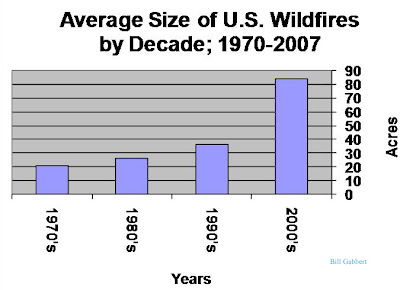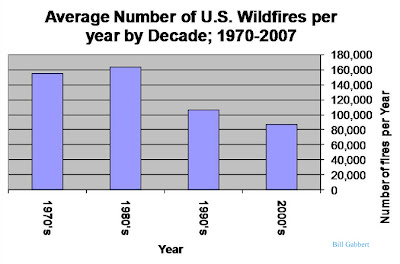

We all know that wildland fires are larger than they used to be. Almost every summer recently there are fires that exceed 100,000 acres. Before 1990 this was not common.
I analyzed some fire occurrence statistics obtained from the National Interagency Fire Center and the National Incident Information Center. The numbers for 2007 are through November 4, 2007. Usually when fire occurrence statistics are displayed you will see total acres and the number of fires by year. But when I computed the average size of fires for each decade, the 1970s through 2007, a trend is painfully obvious. During those four decades the average size of fires increased by 400%, while the average number of fires each year decreased by 44%. (Click on the graphs to make them larger.)
But why are fires larger? Some of the factors that could cause such an increase in the average size are:
- Fire suppression for the last 100 years is catching up with us. Preventing naturally occurring fires to routinely reduce the fuel loads increases the amount of fuel, and the continuity of it, available when a fire starts. Fires burn more intensely and with more resistance to control.
- Climate change. There is no doubt that temperatures in the last few decades have been higher that they were before this period. We can debate how this may have affected wildland fires. Many areas have had extended droughts, causing die back of brush and shrubs. Trees are stressed, making them more susceptible to insects and other pests. Do these higher temperatures have a direct effect on fire behavior on an hour by hour basis?




No comments:
Post a Comment